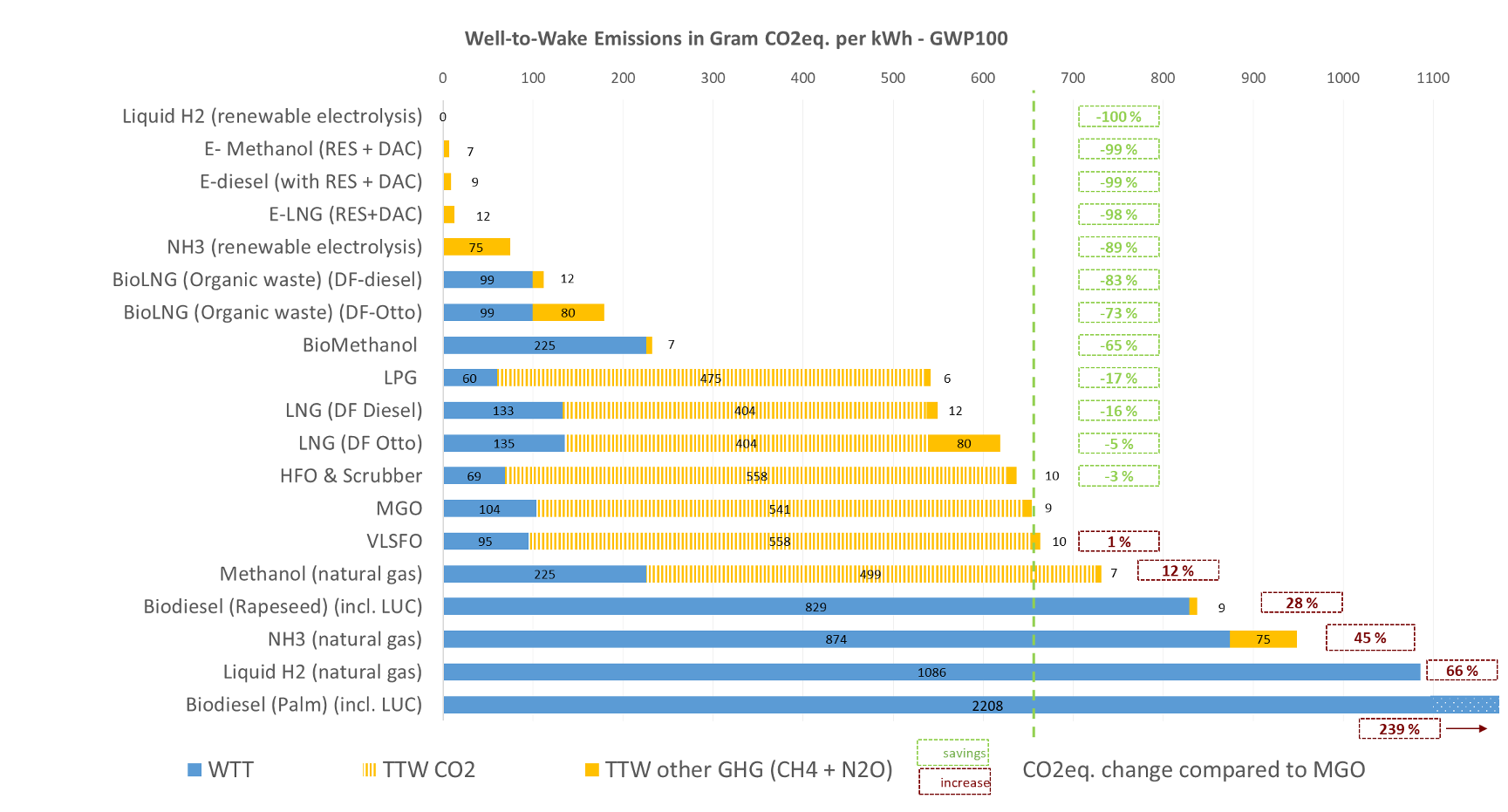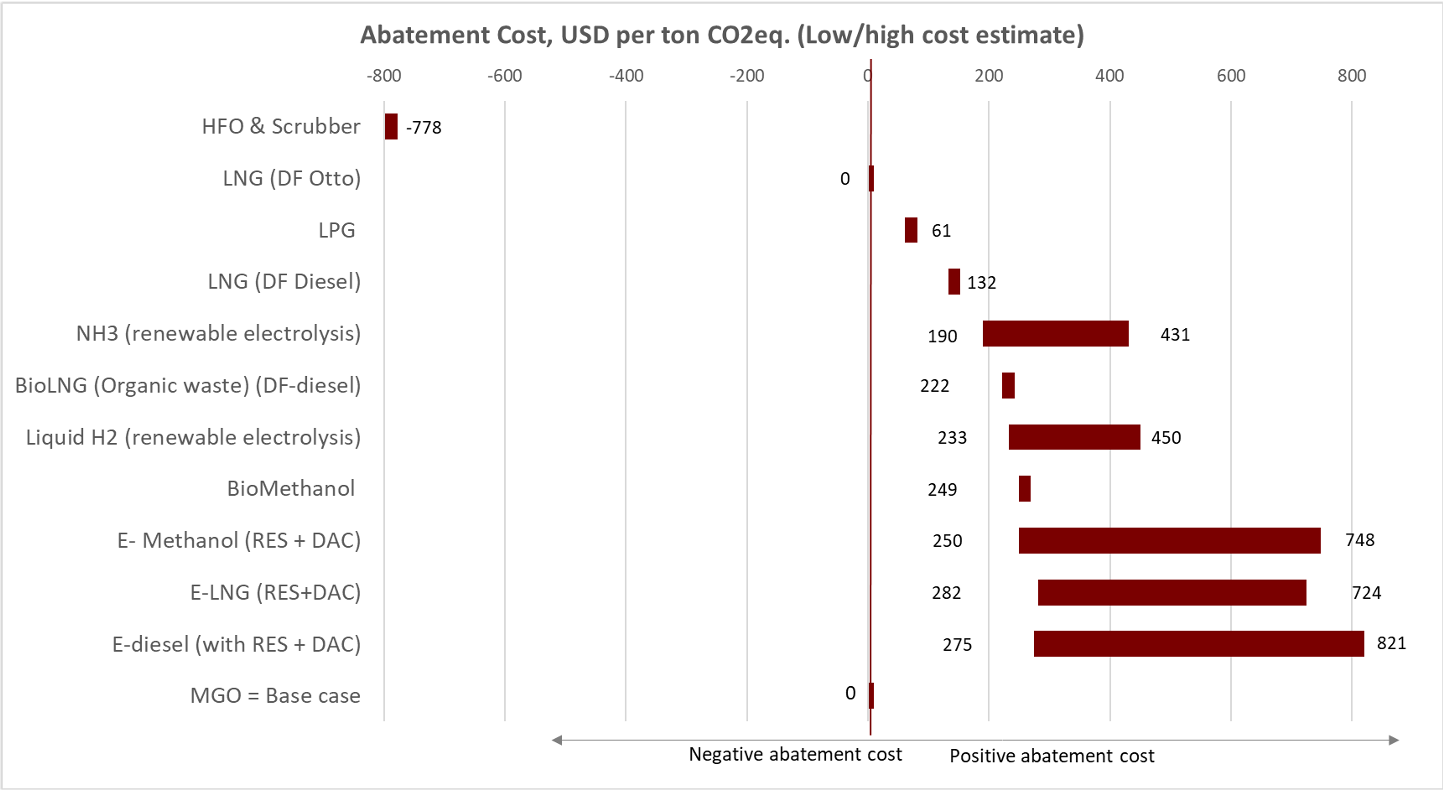Reducing emissions
Reducing our environmental footprint
Solvang’s approach is to design and operate our vessels to use as little fuel as possible. This reduces our CO2 emissions and all other emissions to air.
In this perspective Green Shipping depends on much more than just types of fuel. The environmental footprint from our engines and boilers is made up from a combination of several factors. Fuel source and engine technology combined with operation and load profile, maintenance and after-treatment of exhaust and other discharges give a more accurate account of the true footprint we leave in our wake.

NOx, CO, THC and particles are controlled by the combustion process and after-treatment of the exhaust gases and not the fuel. This means that focusing on engine technology and maintenance and operation is more much more important than any type of fuel.
Focusing on engine technology and maintenance and operation is more more important than any type of fuel.
Green Shipping key factors
- more efficient hulls
- lower speed on main engines,
- higher fuel-efficiency
- type of fuel
- heat recovery
- propeller technology
- anti-fouling
- improved operations procedures
- exhaust gas cleaning technology and a series of other innovations
Solvang’s perspective on Green shipping
The question about pollution is not which fuel you use, but how you use it.
During the last decades, new environmental regulations have become standard in shipping. From a shipowner´s perspective you either comply, or you die.
Solvang´s strategy is to stay ahead of national and IMO regulations by applying ongoing research to our vessels´ operation. We are part of Smart Maritime, Norwegian Centre for improved energy efficiency and reduced harmful emissions.
Solvang’s approach is to design and operate our vessels to use as little fuel as possible. This reduces our CO2 emissions and all other emissions to air.
Smart Maritime´s work package Power systems and fuel.
All discharges are dealt with according to regulations. Solvang has disclosed key environmental performance indicators since 2009 on our webpage.
Energy Efficiency Operational Index since 2009
Fuel consumption and emissions from 4 generations of ethylene carriers
Fuels today
The main fuel for deep sea shipping is HFO with scrubber or VLSFO. There is also a small fraction of LNG, but this is mainly boil of gas on LNG tankers. The MGO fraction have also increased since 2012, this is related to SECA areas, which was introduced in 2015.
The figure shows historical fuel for deep sea shipping. Source: SINTEF report.
In january 2020 the new 0,5 % Sulpure regulation was introduced, and vessel without Exhaust gas Cleaning (SOx Scrubbers), had to change to VLSFO. At the moment there is around 4000 vessel in the world with scrubbers.
Historic fuel for deep sea shipping

Fuels tomorrow
Possible future fuels can be dived in the following groups:
- Conventional fossil fuels; HFO, VLSFO, MGO, LNG and LPG
- Biofuels
- Hydrogen and ammonia (conventional and E-fuels)
- Synthetic E-fuels (gaseous or liquid fuels produced from hydrogen and carbon captured by using renewable electricity)
- Electric power from batteries charged from the grid
Conventional fossil fuels
The figures below compare the green house gas (GHG) impact in a short term (20 years) and long term (100 years) perspective. The charts consider varios fuel types from Well-to-Wake (WTW).
The figures show that heavy fuel oil (HFO) with scrubber reduces GHG emmissions by between 4-6 % compared to very low sulphur fuel oil (VLSFO).
The measurements confirm that technology is more important than fuel. Changing to alternative fuels may actually increase GHG emissions and not reduce them as expected.
Read more
Short term 20 years

Long term 100 years

Biofuels
Biofuel may replace conventional fossil fuels with only minor modifications to the engine and fuels systems.
When assessing the emissions from well-to-wake, fuel from a clean biological source may reduce green house gas emissions by 75-80 % compared to marine gas oil (MGO). However this requires correct use of engine technology and clean sourcing.
The figure below shows how crucial the well-to-wake approach is when assessing the total GHG emissions. For example, biofuel from palm oil may increase the overall GHG emissions with up 200-300 %.

Hydrogen and ammonia (conventional and E-fuels)
Synthetic E-fuels (gaseous or liquid fuels produced from hydrogen and carbon captured by using renewable electricity)
The present IMO carbon factor is based on a Tank To Wake priciple, not Well To Wake. Thus the fuel source and how it is produced does not matter.
E-type fuels has zero emissions in the figure. This requires fuel production from a renewable energy source.

Summary of well to wake emissions from different fuels

Energy
Producing alternative fuels requires a colossal amount of energy. Where does the energy to produce fuel come from? We have to look at the source of the fuel for a complete picture.
The figure below illustrates how much energy is required to produce power to the propeller.

Cost
The figure below illustrates the cost of reducing the emission of one ton GHG gas.
The calculation strongly support our work for making HFO clean. It is a very cost effective solution to reduce the GHG emissions. Actually it is the only available technology with a negative abatement cost. I.e. reduce cost and GHG emissions at the same time.

Summary
We work systematically to find the best technical and operational solutions for the decarbonization of deep sea shipping. The introduction of bio- and E-fuels is likely to be a part of the future fuels. Carbon catching and storage may be another. Until these solutions are available, the best shipping can do is to improve energy efficency in every possible way.
If Shipping shall contribute to reducing Global warming it can best do so by improving energy efficiency.




